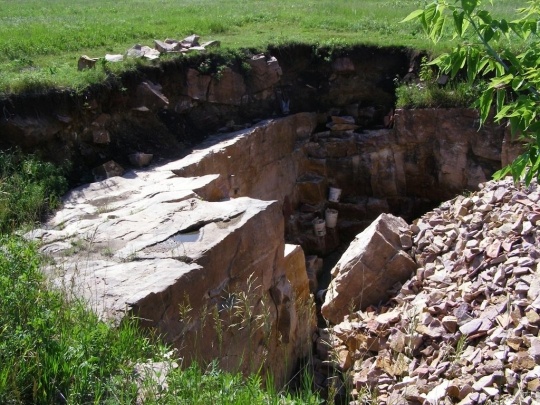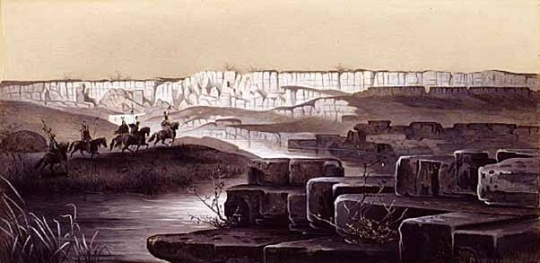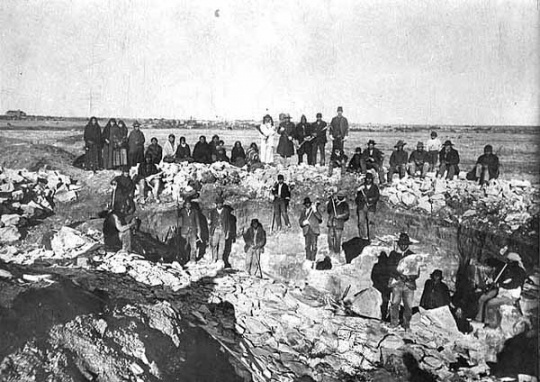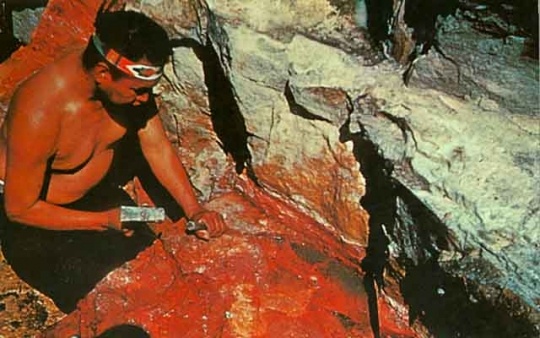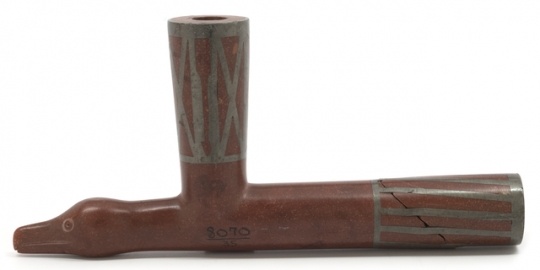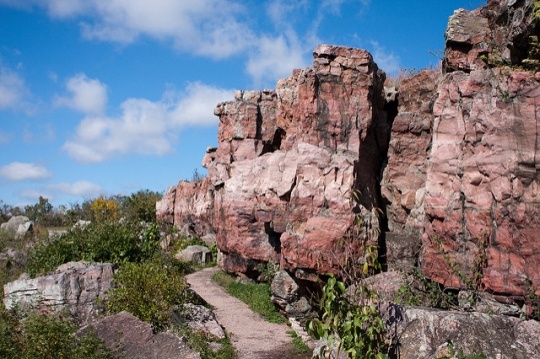Pipestone Quarry
Bibliography
"The C. of C. at Last Determines Upon a Definite Line of Action. St. Paul Daily Globe, February 25, 1890.
http://chroniclingamerica.loc.gov/lccn/sn90059522/1890-02-25/ed-1/seq-2/
Keepers of the Sacred Tradition of Pipemakers. History of Pipestone National Monument.
http://www.pipekeepers.org/uploads/3/1/3/0/31306445/history_of_pipestone_national_monument.pdf
National Park Service. Pipestone: The Rock.
https://www.nps.gov/nr/travel/pipestone/rock.htm
Sanders, Tom. “Jeffers Petroglyphs: a Recording of 7,000 Years of North American History.” Typescript, n.d.
http://sites.mnhs.org/historic-sites/sites/sites.mnhs.org.historic-sites/files/docs_pdfs/Jeffers-Petroglyphs-%20history.pdf
Scott, Douglas D. et al. National Park Service. An Archeological Inventory and Overview of Pipestone National Monument, Minnesota. Lincoln, NB: United States Department of the Interior, National Park Service, Midwest Archaeological Center, 2006.
https://www.nps.gov/archeology/sites/pipestone.pdf
Yates, Diana. “Study of Pipestone Artifacts Overturns a Century-old Assumption.” Illinois News Bureau, December 18, 2012.
https://news.illinois.edu/blog/view/6367/204918
Chronology
ca. 200 BCE–400 CE
ca. 1700
1836
1858
1890
1891
1895
1928
1929
1933
1934
1934
1935
1937
1957
1996
Bibliography
"The C. of C. at Last Determines Upon a Definite Line of Action. St. Paul Daily Globe, February 25, 1890.
http://chroniclingamerica.loc.gov/lccn/sn90059522/1890-02-25/ed-1/seq-2/
Keepers of the Sacred Tradition of Pipemakers. History of Pipestone National Monument.
http://www.pipekeepers.org/uploads/3/1/3/0/31306445/history_of_pipestone_national_monument.pdf
National Park Service. Pipestone: The Rock.
https://www.nps.gov/nr/travel/pipestone/rock.htm
Sanders, Tom. “Jeffers Petroglyphs: a Recording of 7,000 Years of North American History.” Typescript, n.d.
http://sites.mnhs.org/historic-sites/sites/sites.mnhs.org.historic-sites/files/docs_pdfs/Jeffers-Petroglyphs-%20history.pdf
Scott, Douglas D. et al. National Park Service. An Archeological Inventory and Overview of Pipestone National Monument, Minnesota. Lincoln, NB: United States Department of the Interior, National Park Service, Midwest Archaeological Center, 2006.
https://www.nps.gov/archeology/sites/pipestone.pdf
Yates, Diana. “Study of Pipestone Artifacts Overturns a Century-old Assumption.” Illinois News Bureau, December 18, 2012.
https://news.illinois.edu/blog/view/6367/204918









